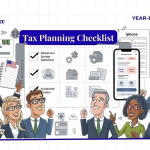Tax Credits vs Tax Deductions: Tax season can feel like investigating a maze blindfolded. Did you know that 1 in 4 Americans overpay their taxes since they do not get credits and deductions? With evaluation laws progressing yearly, knowing the difference between tax credits and tax deductions might spare you thousands in 2025.
This web journal post, “Tax Credit vs. Tax Deductions,” cuts through the discourse to clarify how these gadgets work, who qualifies, and how to utilize them to lower your tax obligation or boost your refund. Let’s demystify your taxes together!
Tax Credits vs Tax Deductions: The Center Contrasts Explained

Imagine tax credits and deductions as two kin with distinctive identities. Both need to offer assistance to save cash, but they do it differently. Here’s how:
What Are Tax Credits?
Tax credits are like minute coupons for your appraisal charge. They lessen what you owe dollar-for-dollar. If you qualify for a $1,000 credit, your assessed hazard drops by exactly $1,000. A few credits are refundable, meaning the IRS may pay you if the credit surpasses your tax liability.
Example: Maria, a single mother winning $40,000, claims the $2,000 child tax credit. Her unique $3,500 tax drops to $1,500. If her charge were $0, she’d get $1,500 as a discount (since the credit is partly refundable).
Learn more aboutIRS tax credits here.
What Are Tax Deductions?
Tax deductions are like rebates on your assessable pay. They lower the sum of salary the IRS taxes, consequently diminishing your tax. The degree of derivation depends on your tax bracket. A $1,000 deduction for an outline saves $220 if you’re in the 22% bracket.
Example: James, a teacher who won $55,000, claims a $250 subsidy for classroom supplies. This decreases his assessable pay to $54,750, saving him $55 (22% of $250).
Tax Credits vs Tax Deductions: Side-by-Side Comparison
| Feature | Tax Credits | Tax Deductions |
| Impact | Directly reduces taxes owed | Reduces taxable income |
| Value | $1 credit = $1 saved | $1 deduction = $0.10–$0.37 saved (based on tax bracket) |
| Best For | Everyone (especially low-to-moderate earners) | Higher earners in upper tax brackets |
| Examples | Child Tax Credit, Earned Income Tax Credit (EITC), EV Tax Credit | Mortgage interest, student loan interest, charitable donations |
How Tax Credits Work in 2025 (With Real-Life Scenarios)
Tax credits are the superheroes of tax reserve funds. Let’s break down the most impactful ones for 2025:
1. Child Tax Credit

- 2025 Regard: Age under 17 gets the aggregate of $2,000 per child (to a few degrees refundable up to $1,600)
- Who Qualifies: Watchmen with a balanced net pay (AGI) under $200,000 (single) or $400,000 (married).
Scenario: The Rodriguez family has three kids and an AGI of $150,000. They claim $6,000 in child care credits, bringing down their evaluated charge from $10,000 to $4,000.
Know More About – What Changes Could Trump Propose in the 2025 Child Tax Credit?
2. Earned Income Tax Credit (EITC)

- 2025 Regard: Up to $7,430 (changes by compensation and dependents)
- Who Qualifies: Low-to-moderate specialists. For example, a single parent with two kids who wins $50,000 may qualify.
Scenario: Linda, a retail pro who wins $30,000, claims a $3,000 EITC. Her $2,500 assessment charge turns into a $500 refund.
Don’t Miss Out! Claim the Earned Pay Tax Credit (EITC) and Get the Discount You Deserve
3. Electric Vehicle (EV) Evaluate Credit

- 2025 Regard: Up to $7,500 for unused EVs (non-refundable)
- Catch: Compensation limits apply ($150k single/$300k married).
How Tax Discoveries Work in 2025: Standard vs Itemized
Deductions come in two flavors, and choosing the right one is crucial:

Standard Deduction
- 2025 Rates: $14,600 (single), $21,900 (head of family), $29,200 (married)
- Best For: Most citizens (90% take this route).
Itemized Deductions
- Common Categories:
- Contract charmed ($750k credit limit)
- State/local charges (capped at $10,000)
- Charitable blessings (up to 60% of AGI)
- Medical costs surpassing 7.5% of AGI
Scenario: Dr. Patel, a pro picking up $400,000, paid $35,000 in contract charges and $25,000 in state charges. He itemizes to claim $45,000 in conclusions ($35k + $10k SALT cap), saving $16,650 (37% charge bracket).
Use theIRS Deduction Finderto decide.
Tailored Procedures for Particular Taxpayers
For Families
- Prioritize: Child Charge Credit, Child/Dependent Care Credit (up to $2,100 for two kids)
- Pro Tip: Utilize a Subordinate Care FSA to deduct $5,000 pre-tax for childcare.
Get Child Credits – $300 Direct Deposit 2025: Eligibility, Payment Dates, and What You Need to Know
For Freelancers/Self-Employed

- Top Findings: Domestic office ($5/sq ft), wellbeing protections premiums, QBI derivation (20% of commerce income)
- Watch Out: The 15.3% self-employment charge still applies to net earnings.
For Retirees

- Savvy Moves: Claim the Retirement Reserve funds Commitments Credit (up to $1,000) if salary exceeds $36,500.
- Dedication Hack: Devote Medicare Part B premiums if you itemize therapeutic expenses.
For Students

- American Opportunity Credit: $2,500/year for educational costs (to begin with 4 years)
- Lifetime Learning Credit: $2,000/year for graduate courses
SeeIRS Education Creditsfor details.
5-Step Arrange to Maximize Your 2025 Charge Savings

- Audit Your Costs: Utilize apps to track deductible costs year-round. (Use apps likeExpensify)
- Check Credit Qualification: The Charge Right-hand apparatus given by the IRS is the best for this purpose. (IRSEITC Assistant)
- Choose Deduction Technique: Compare standard vs. itemized utilizing the final year’s assessment software.
- File Electronically: IRS Free Record handles credits/deductions for livelihoods below $79,000. File Electronically(UseIRS Free File)
- Consult a master: A CPA can spot openings like the Saver’s Credit or student credit deductions.

Also Read to Maximize Your Refund: 9 Reasons Why Your 2025 Tax Refund Might Be Bigger
Common Botches to Avoid
- Overlooking State Credits: 29 states offer EV credits beyond government benefits.
- Misunderstanding Phaseouts: The Child Assess Credit stages out by $50 for each $1,000 over the pay limits.
- Forgetting Documentation:Keep Form 1098 for contract intrigue or Form 8863 for instruction credits.
FAQs: Your Beat Tax Credits vs Tax Deductions Questions
Q1. Can I claim both assessed credits and deductions?
A1. Absolutely! Credits decrease your tax liability directly, whereas deductions lower your assessable income. Combine them for the most extreme savings.
Q2. What’s the distinction between refundable and non-refundable credits?
A2. Refundable credits (like EITC) can be discounted if they surpass your assessed charge. Non-refundable credits (like the EV credit) decrease your charge to $0.
Q3. How do I take the standard finding or itemize?
A3. Compare both alternatives. If itemized derivations (contract intrigued + state charges + charity) surpass the standard finding, itemize. Something else: take the standard.
Q4. Can I Claim Tax Credits If I Take the Standard Deduction?
A4. Yes! Tax credits and deductions work independently. Even if you take the standard deduction instead of itemizing, you can still claim tax credits like the Child Tax Credit, Earned Income Tax Credit (EITC), or education credits. Credits directly reduce your tax bill, while deductions lower your taxable income.
Q5. Do Tax Deductions Have Income Limits Like Some Tax Credits?
A5. Some deductions do have income limits or phaseouts. For example:
- Student Loan Interest Deduction phases out for single filers earning over $85,000 (2025 limits may adjust).
- IRA Deductions have income restrictions if you’re covered by a workplace retirement plan.
However, the standard deduction is available to all taxpayers regardless of income, while itemized deductions (like mortgage interest or charitable donations) have caps (e.g., the $10,000 SALT limit). Always check IRS updates for the latest thresholds.
Conclusion: Take Control of Your 2025 Taxes

Tax credits and deductions are your money-related toolkit for minimizing what you owe and maximizing what you keep. Start by claiming each credit you’re qualified for—they’re the overpowering lifters. Then, purposely utilize conclusions to chip away at your assessable wage.
For official IRS updates, visitIRS.gov.
Following costs or guidance, an assessment ace can lead to four-figure savings reserves. As tax laws develop, stay informed through IRS.gov or trusted money-related advisors. Your wallet will thank you!
Would you like apersonalized tax-saving checklist? Drop a comment! 👇
References
- IRS Credits & Deductions(2025 Updates)
- Tax Policy Center(2025 Analysis)
- NerdWallet Tax Guide
Thank you for reading this post, don't forget to subscribe!






